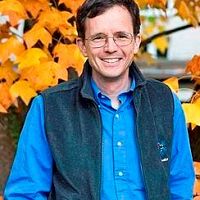Ferrier et al., 2010
Mineral-specific chemical weathering rates over millennial timescales: Measurements at Rio Icacos, Puerto Rico
Ferrier, KL; Kirchner, JW; Riebe, CS; Finkel, RC. (2010)
Chemical Geology 277(1): 101-114 Cross-CZO
-
Sierra, COLLABORATOR
-
Sierra, INVESTIGATOR
Abstract
Mineral weathering plays a prominent role in many biogeochemical and geomorphological processes. It supplies nutrients to soils and streams, accelerates physical erosion by weakening bedrock and producing easily erodible soil, and modulates Earth's long-term climate by drawing down atmospheric carbon dioxide. We calculate mineral-specific chemical weathering rates at two field sites in the Rio Icacos catchment, Puerto Rico, by combining new mineral abundance measurements from quantitative powder X-ray diffraction (XRD) with existing measurements of (i) soil production rates from cosmogenic nuclides, (ii) chemical alteration of the regolith from X-ray fluorescence (XRF), and (iii) dust deposition rates. The central purpose of this paper is to show that combining measurements of cosmogenic nuclides with XRF-based geochemistry and XRD-based mineralogy can, in favorable cases, provide weathering rates of abundant, soluble mineral phases in actively eroding terrain to an accuracy of better than 20% of the mean, even in places with high dust deposition rates. Mineral weathering at our two field sites is dominated by plagioclase, at rates of 3274 ± 575 mol ha −1 yr −1 and 3077 ± 541 mol ha −1 yr −1, followed by hornblende, at 187 ± 71 mol ha −1 yr −1 and 308 ± 93 mol ha −1 yr −1. Within the uncertainty of our data, all weathering of these primary minerals occurs below the saprolite–soil interface. Our measurements imply that kaolinite production in saprolite is roughly 1.3 times faster than kaolinite weathering in the soil. Our results are the first to show that field measurements of cosmogenic nuclides, XRF, XRD, and dust fluxes can be combined within the geochemical mass balance method to quantify long-term mineral weathering rates, even in locations with high dust deposition rates. This implies that the mass balance method can be a valuable tool for quantifying the effects of climate, vegetation, tectonics, and other factors on weathering rates of individual mineral phases.
Citation
Ferrier, KL; Kirchner, JW; Riebe, CS; Finkel, RC. (2010): Mineral-specific chemical weathering rates over millennial timescales: Measurements at Rio Icacos, Puerto Rico. Chemical Geology 277(1): 101-114. DOI: 10.1016/j.chemgeo.2010.07.013
Explore Further


